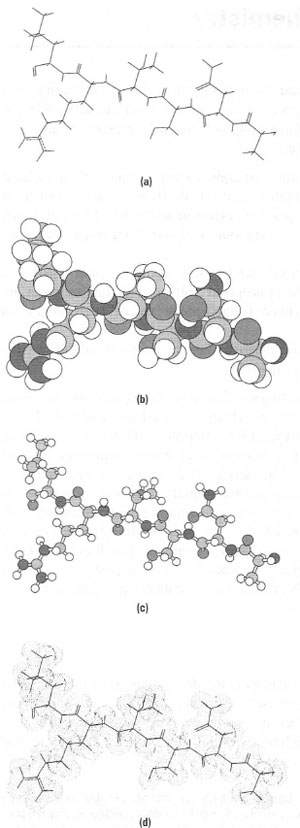Computational chemistry
A chemist is normally visualized as someone in a white laboratory coat performing an experiment. However, some chemists never actually go into a 'wet chemical' laboratory but utilize computers to perform experiments. Why do chemistry on computers? |
| Figure 44.1 Computer generated images of six amino acids using different representations (a) stick, (b) balls, (c) balls and cylinders and (d) sticks and dots. |
- Safety: invariably all laboratory experiments carry some risk, associated with the chemicals or apparatus to be used. It is usual to perform a COSHH assessment (p. 7) prior to experimental work. Computational chemistry allows the user to carry out work on 'dangerous' chemicals with no risk!
- Cost: apart from the financial outlay on a computer and associated peripherals together with the appropriate software, no further costs are involved, unlike the e xperimental laboratory where most chemicals require disposal after use.
- Understanding: computational chemistry has the ability to provide a basis for understanding chemical principles.
- single molecule calculations
- molecular interactions
- reactions of molecules.
*Note: Just as in spectroscopy or chromatography, where not every spectrum or peak is resolved, so in computational chemistry do not assume every computed number is exact. However, computational chemistry can allow a qualitative or approximate insight into chemical processes provided the user understands the basis behind each approach and can interpret the results.




